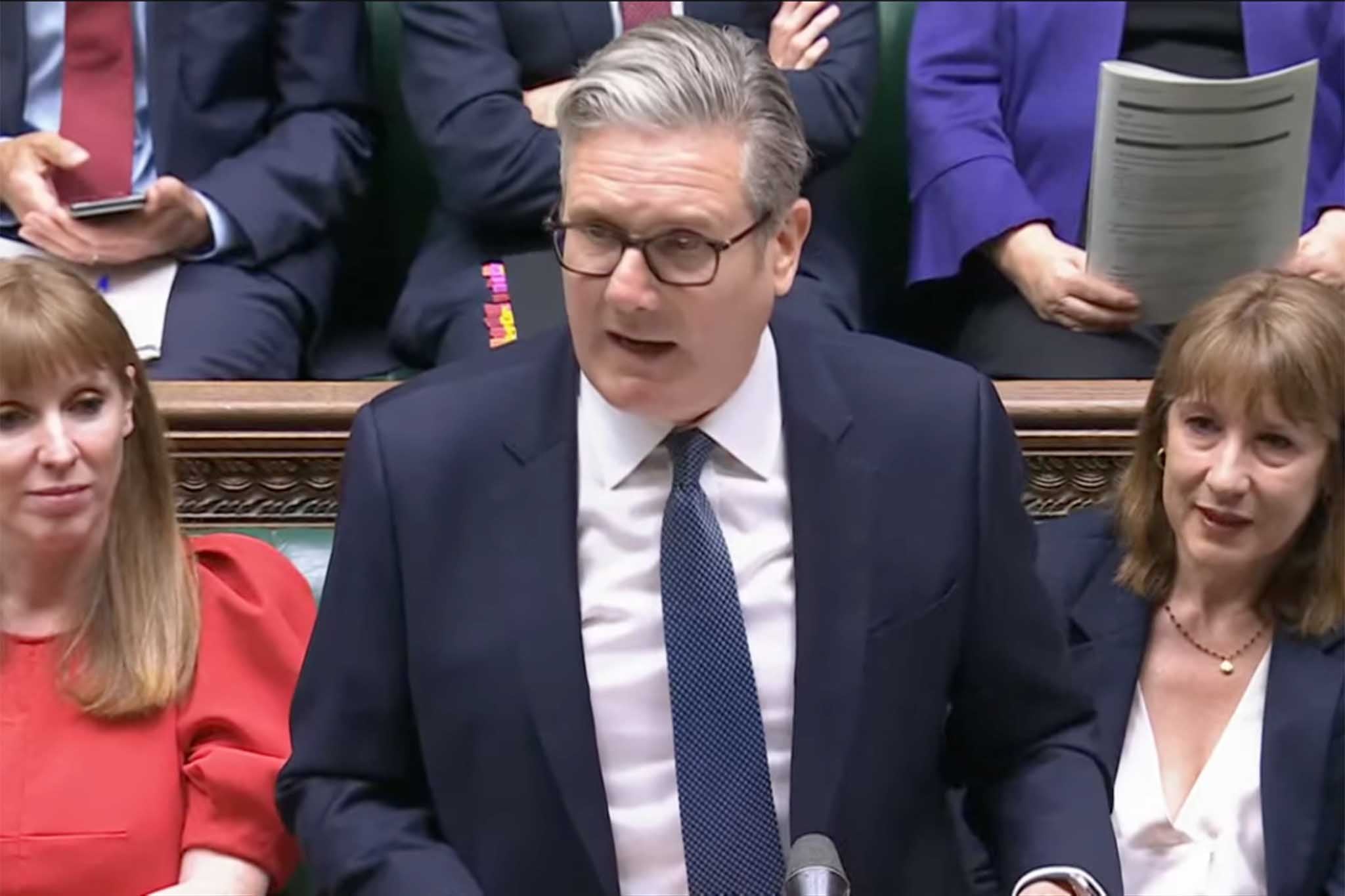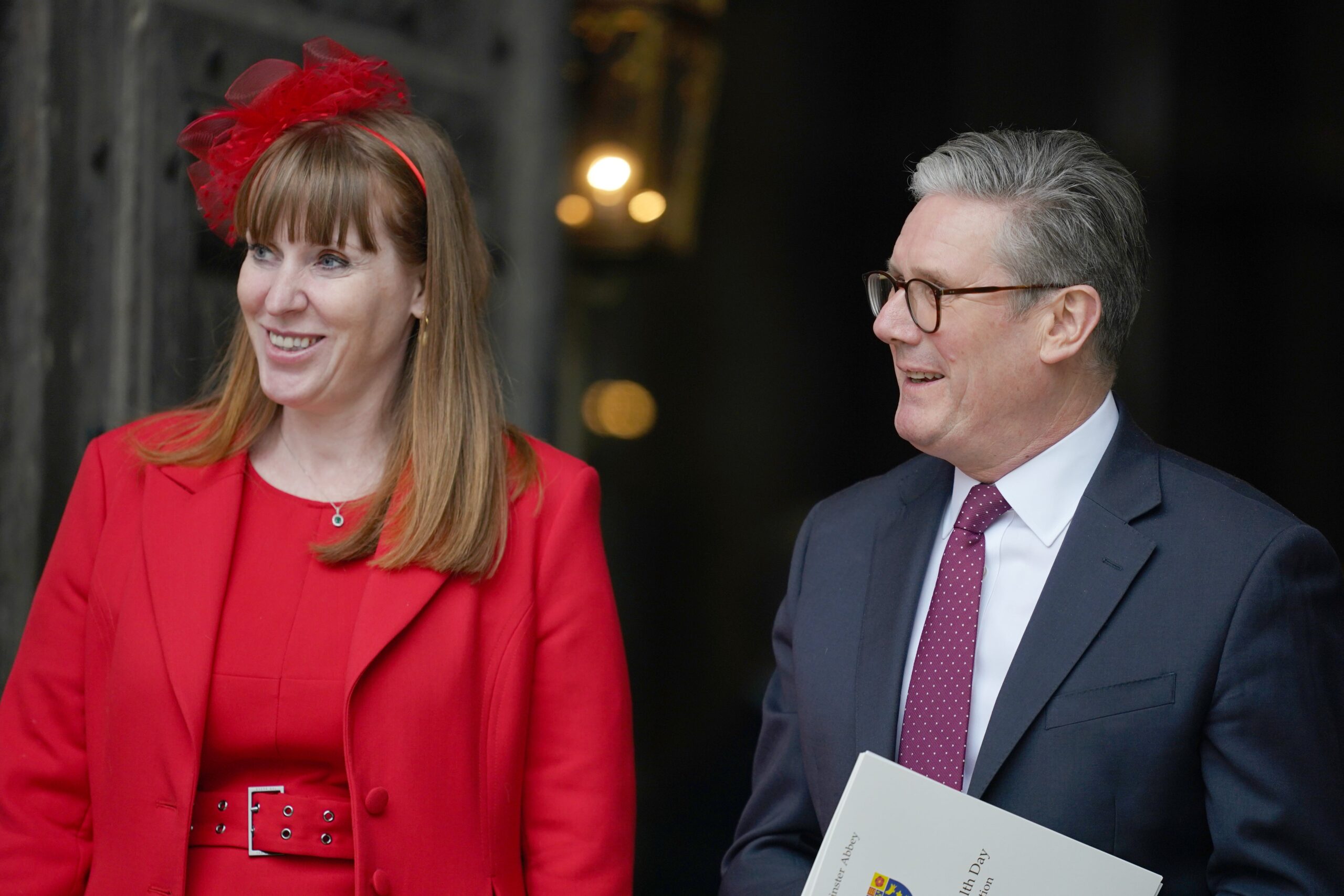The images of Rachel Reeves crying on the frontbenches during PMQs on Wednesday – just hours after the government was forced into a humiliating £5bn climbdown on welfare – were stark. It looked like Sir Keir Starmer’s top team was on the brink of falling apart.
But the following day, the prime minister came out fighting, insisting his chancellor – who also looked notably more cheery – was here to stay.
A minister in tears would make news any day of the year. But on a day when questions over the prime minister’s leadership were already splashed across the papers, just days before he was due to mark one year in office, the image was even more jarring for Labour – and only served to add fuel to growing questions about whether or not he is the right person for the job.
For weeks now, there have been whisperings of a possible leadership bid by Angela Rayner. The housing secretary’s repeated attempts to shut down the rumours – saying she has no desire to hold the top job – have done little to dampen speculation.
The rumours speak volumes about the level of disaffection within the party over Sir Keir’s leadership and the direction of government.
Labour won a thumping majority at last year’s general election. They had a clear mandate to deliver their so-called ‘plan for change’ and there was a real sense of optimism. But just one year on, that optimism is well and truly gone.
After repeated attempts to reset the narrative, the prime minister’s authority has been damaged, while brutal polling shows that voters have turned away.

And this week’s humiliating welfare debacle, which saw the PM gut his reforms entirely only to still be faced with the largest rebellion of his premiership so far – has only added to his mounting woes.
Behind the scenes, there is now more wrangling than ever over where Labour goes next.
If Tuesday’s welfare vote proved anything, it’s that Labour MPs are far more left-wing than their party’s leader.
Starmer has been attempting to pull the party to the right both to try to combat the threat posed by Reform, but also to deliver a government that meets the expectations of the British public.
But as a result of failings in Downing Street, and obfuscations from his own MPs, it hasn’t worked.
There are now growing calls for a reset in No 10. The problem, however, is that this isn’t the first time the prime minister has attempted to do so. We’ve seen repeated attempts to draw a line under previous mistakes and fumbles from the government, but no real change in direction.
Despite Starmer’s insistence that his chancellor is here to stay, there is a growing feeling that without a reshuffle, the PM will be unable to truly draw a line under the past year.
If he can accompany that with both a clear plan to plug gaps in the public finances after several U-turns – including Tuesday’s welfare chaos and previous rowbacks on winter fuel payments – alongside a genuine strategy to bring down immigration, he may be able to turn his fortunes around.
But if that fails, and Starmer is unable to use a reshuffle to save some of his own authority, there is a small but growing chance the prime minister will be booted out before the next election.
Championed by the so-called ‘soft left’, there is now a developing feeling within Labour that if the party, led by Rayner, provided a true left-wing offering (and did it well), that could be a far more effective counter to the divisive politics of Reform UK than Starmer’s pragmatism. Especially given Nigel Farage’s proposals to lift the two child benefit cap and restore winter fuel payments to all seem to have gone down remarkably well with the British public.
But sitting to the right of Rayner is Wes Streeting – also seen as a strong contender to succeed the PM. He’s well-liked by the party, as of last month being the third most popular Labour politician among party members – behind Rayner and Greater Manchester mayor Andy Burnham, who is not currently a Labour MP.
He’s so far proven himself a safe pair of hands when it comes to the health service, and has led one of the few departments that seems to be somewhat successfully implementing the change they promised.

While allies of both Streeting and Rayner are attempting to shut down fevered speculation over possible leadership bids, a number of party insiders see the local elections in May next year as the deadline for when a decision would need to be made on the party’s future.
But there is an important health warning that needs to accompany any talk of replacing Starmer. He won a massive majority. The Tory years, which saw Britain run by three different prime ministers in two months, shouldn’t fool anyone into thinking replacing him will be an easy task.
The only official way to remove an incumbent leader of the party is for 20 per cent of Labour MPs to nominate a willing candidate to stand against the leader, triggering a leadership contest. With Labour’s current majority, that would require at least 80 MPs to get behind a single candidate – no easy task.
Therefore, the chance of Starmer being replaced is, at present, small. But the clock is ticking. Voters are currently unconvinced that Labour is anything different from the “14 years of Tory failure” that Starmer so often talks about. Every day that this sentiment is allowed to fester, the likelihood of a coup increases.
